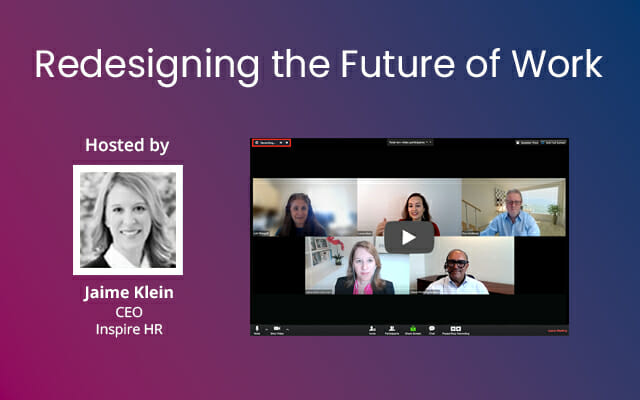
How to Tackle Feedback Head-On
MAY 02, 2016
How to Tackle Feedback Head-On
Most managers want to avoid challenging conversations with employees almost as much as they want to avoid getting a cavity filled at the dentist. Why this reluctance? Many leaders are concerned that their feedback will negatively impact employee self-esteem or cause unwanted stress, frustration, and even anger. If not handled well, tough conversations can quickly become awkward, be perceived as a personal assault or become wrought with tension. What managers often lose sight of is the value and productivity that these interactions can create, including improved performance and business outcomes.
There are a number of important factors that go into deciding the best approach to opening a performance-based discussion. I want to share some of the most common questions we get from our clients.
When is the right time to provide feedback?
Right away. It is helpful to both you and your direct report to share feedback at the speed of real life. For example, if John lacks gravitas in a client meeting, let him know as soon as he heads back to his desk from the actual meeting. Why such immediacy? Employees need and appreciate prompt feedback. It saves them from making the same mistake twice. Giving feedback as soon as the need arises also makes it harder for you to put off having the conversation, or to get distracted by other pressing issues or workload concerns.
How often should I provide feedback?
Continuously. Often, leaders feel too busy or do not want to surprise their direct report with feedback beyond the traditional mid-year and year-end checkpoints. Leaders have a tendency to store examples in a “backpack” that they only unpack at designated appraisal times. The challenge is that by the time mid-year or year-end arrives, the examples are stale, and the employee is left without the benefit of receiving feedback and coaching to improve their performance. As a leader, it’s important that you document and share your feedback on an ongoing basis. This way, there will not be any surprises during appraisal time because the employee will hear a summary of feedback you’ve shared throughout the year.
How do I manage challenging conversations?
Historically managers have advised starting with a positive (e.g., I appreciate that you come to work on time each day), moving to a negative (e.g., I’m disappointed that you have been missing a number of deadlines) and ending with a positive (e.g., thanks for being such a strong team player), thus creating a “sandwich effect.” But times have changed. Here are five quick tips our clients love:
- Keep a positive mindset. Instead of thinking that you are providing criticism, a simple shift in mindset can make a big difference. When you have to broach a difficult topic, remind yourself that you are providing valuable feedback, suggestions and directions for the future. You are actually doing the employee a favor by setting clear expectations and providing forward-thinking ideas. We tell our clients to focus on three key words for shaping future performance: “the next time.” If sloppy work is Tanya’s issue, for example, you can let her know that the next time, you expect her to spend more time and effort checking her work.
- Know your main message. Knowing that you may be nervous, having a firm grasp on what you want to communicate is critical. Consider using notes to help you deliver your feedback, or practice what you want to say in advance of the discussion. Be crystal clear about the intent of your discussion. Say something like “I have some feedback on your performance at work that you will benefit from hearing” or “I want to make some suggestions that will help you in your career development.” This lets the employee know you have something important to share. Be specific about what you want the employee to do differently so that you are both on the same page.
- Focus on the business impact. Oftentimes, feedback can feel personal, especially with issues related to tardiness, physical presentation, cleanliness and organization. One way to prevent feedback from becoming internalized is to link your talking points back to the overall business goals. Say something like “when you come to work late it really holds the whole team back from meeting deadlines and our clients suffer as a result.” Making it a business issue instead of an individual issue will help the employee understand that his/her actions can impact the business as a whole.
- Think dialogue, not monologue. When faced with delivering challenging information, many people feel the need to talk more than usual to avoid awkward silences. It is important to point out that this conversation should not be a monologue. Rather, it should be an interactive dialogue between the manager and the employee. If you find that you are talking for more than half of the discussion, take a pause. Give the employee time to process and reflect on what is being said. Managers can help engage the employee in the dialogue by asking thought-provoking questions. A manager might ask:
- How do you see the situation?
- How might you do things differently next time?
- What do you think worked?
- What could have gone better?
- Don’t rush to fill the gaps in conversation.
- Leave the action plan in the employee’s court. Once you have communicated your main points and have provided ample time for discussion, ask the employee to provide a summary of the conversation and the action steps required. This will help you make sure that the employee appropriately digested the information and understands expectations for the future.
How do I handle an emotionally-charged reaction?
If your direct report expresses anger, denial, silence, indifference, or despair, make sure to acknowledge it. Remember that you are not making a personal attack. If your direct report has a difficult response to your feedback, you can say something like, “I know this is hard. I believe in you.” Do not let difficult emotions dilute your feedback, but remember to acknowledge your employees’ feelings, give them space to express themselves, and if possible, redirect the conversation to constructive performance solutions. If your conversation becomes too upsetting, you can always resume the feedback meeting later. Your goal is to work together to solve the performance problem at hand.
In our work with Fortune 500 company clients, we have found that the strongest leaders share feedback with their employees openly, honestly and in a timely manner. Many managers feel a sense of relief when the conversation is over. When difficult conversations become a catalyst for positive change, managers often wish they had initiated the discussion even sooner. To learn more about how Inspire HR can help your leaders tackle feedback, contact me at jaime@inspirehumanresources.com or (917) 612-8571.







